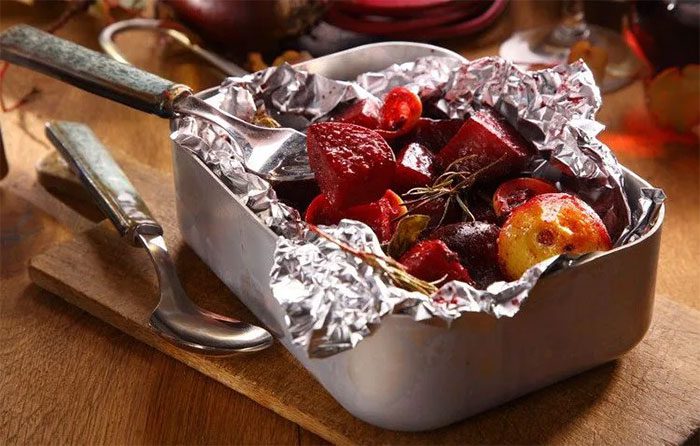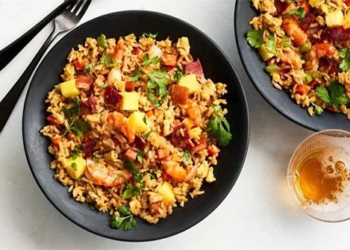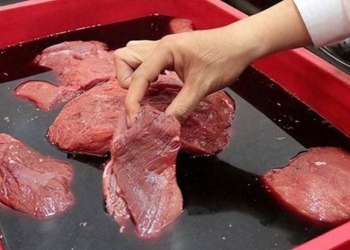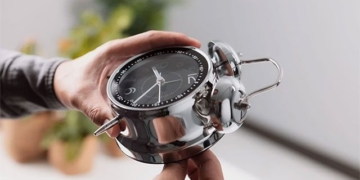Many reports suggest that using aluminum foil in food preparation may cause cancer.
When using an air fryer to grill meat or fish, many families have the habit of wrapping food in a layer of aluminum foil. The reasons include: aluminum foil makes cleaning the pot easier after cooking; it prevents juices from the food from leaking out; and it can help the food cook faster.
However, there are claims that aluminum, being a metal, can lead to health issues when used in cooking, potentially even causing cancer. So, what is the truth behind this?

Should aluminum foil be used in food preparation?
Is it safe to cook with aluminum foil and parchment paper?
In response to the question, “Is aluminum foil safe for cooking?”, Associate Professor Nguyen Duy Thinh (Institute of Biotechnology and Food Technology, Hanoi University of Science and Technology) confirms: It is safe. Contrary to popular belief, aluminum foil is actually aluminum paper. It is thin, lightweight, and inexpensive, making it very convenient for wrapping or packaging food before cooking. The expert explains that the primary material used to produce aluminum foil is high-purity aluminum (Al), which allows for the creation of very thin aluminum sheets.
The aluminum layer is advantageous for heat conduction, ensuring that food cooks evenly and tastes better. Historically, aluminum pots have been used for cooking, and aluminum foil serves a similar purpose. Therefore, there is no evidence to support the idea that cooking with aluminum foil causes cancer.
Although some studies have shown that aluminum materials can cause neurotoxicity in rats, expert Turhan S from Ondokuz Mayis University (Turkey) states that the amount of aluminum that leaches from aluminum foil poses no health risks to consumers when cooking food.
The Centers for Disease Control and Prevention (CDC) also asserts that the amount of aluminum from aluminum foil does not pose health risks when cooking.
If families prefer not to use aluminum foil for wrapping food, they can opt for parchment paper instead. This type of paper has been coated with a layer of silicone for heat resistance.
Associate Professor Nguyen Duy Thinh mentions that parchment paper is also known as wax paper. The paper is coated with a silicone layer to withstand heat and is commonly used in baking and cooking, making it safe for food preparation. However, the expert advises that parchment paper should not be used at temperatures exceeding approximately 250 degrees Celsius.
Additionally, families should avoid consuming fried or grilled foods too frequently. Instead, cooking methods such as steaming or boiling are more recommended by experts. Daily menus should also include a balanced intake of fiber, carbohydrates, lipids, vitamins, minerals, and proteins.

Avoid using aluminum foil to wrap acidic or sour foods.
Some important tips for using aluminum foil in food preparation
- Avoid letting grease spill over the foil, which can cause food to burn or char, resulting in unappetizing and unhealthy meals.
- Do not wrap food too tightly in aluminum foil, as this may cause uneven cooking.
- Avoid recycling aluminum foil. After each use, it may become burnt or torn.
- Choose high-quality, thicker aluminum foil for cooking.
- Do not place aluminum foil in the microwave, as it can create sparks during cooking.
- Avoid using aluminum foil to line the bottom of the oven, as it may damage the appliance.
- It is best to avoid using aluminum foil to wrap acidic or sour foods. According to experts, the acids in these foods can react with aluminum foil. This can not only diminish the flavor of the dish but also increase aluminum ion absorption in the body, posing health risks. Even when used to store food without heating, it can lead to chemical reactions that spoil or mold food more quickly.
In general, it is advisable not to use aluminum foil for microwave cooking. Standard microwave ovens use electrical energy to heat food, which can cause sparks when aluminum foil is used. However, if using a microwave with a grilling function, four conditions must be met as outlined by the U.S. Food and Drug Administration (FDA):
- Use new, smooth aluminum foil, as wrinkled foil may spark.
- Carefully wrap the edges of the aluminum foil, securing it around the food.
- The aluminum foil should cover no more than 1/4 of the food.
- Maintain a distance of at least 2.5 cm between the foil and the walls of the microwave.
Instances where aluminum foil is prohibited in the microwave include: the presence of metallic racks or rotating metal trays inside the microwave, any instructions indicating that foil should not be used, and the appearance of sparks when placed in the microwave.
Additionally, avoid excessive use of aluminum foil at the bottom of the oven. Instead, use a baking tray and cover it with aluminum foil for better protection of the oven and increased safety. Overusing aluminum foil can also damage the non-stick coating of the air fryer, making it difficult for food to cook evenly due to the bottom-up heating mechanism.





















































